Small vegetable garden ideas – 8 ways to live the good life in a tiny space
Introducing the best small vegetable garden ideas to help you grow your own herbs, veg and fruit
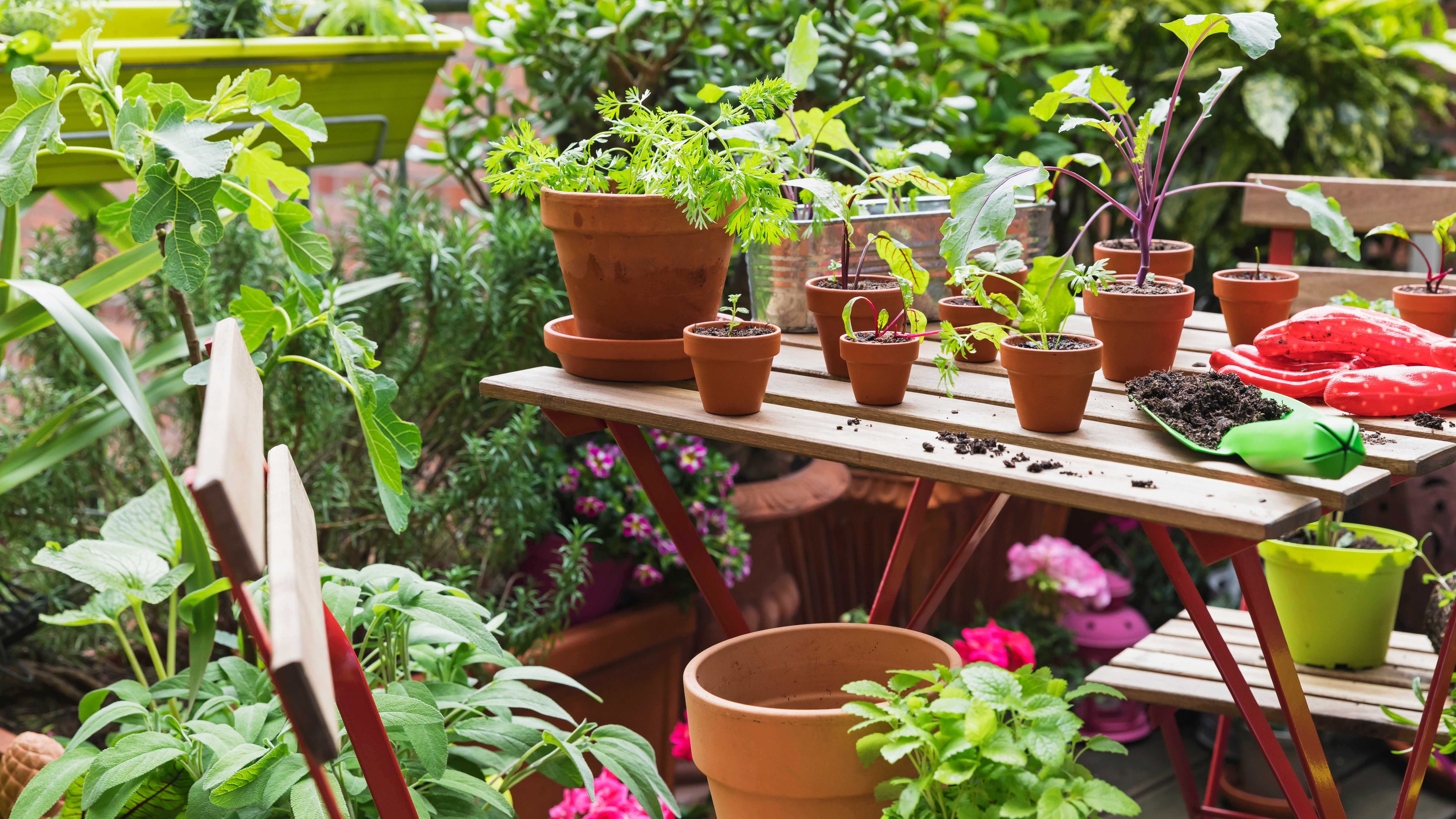
Want a taste of the good life in the city? Armed with the best small vegetable garden ideas, you can do just that. Whether you have a small garden, balcony, or compact courtyard – you can turn your bijou outdoors into a flourishing vegetable haven.
And thankfully, according to garden designer, Pete Adams, it’s easy to grow your own no matter the small outdoor footprint you're working with. He says, ‘There is so much that can be grown in a small space, sometimes you just need to think outside the box and consider every growing potential.
'Things don’t just have to grow at ground level, use vertical space to maximize how much you can get into an area. Pots and containers can help make the most of difficult areas, and potatoes can even be grown in a large container or a compost sack. Maximizing on intercropping can make the most of what available space you do have – plant fast-growing crops amongst those that are slower, making the most of all available space. Sneaking in a fast-growing crop of rocket or radishes can pay dividends after the main harvest.’
So if you've always wanted to tick off sustainable living by sowing your own seeds – keep reading. We've compiled a list of the best small garden ideas to grow veg so you can get started.
1. Make use of hanging baskets
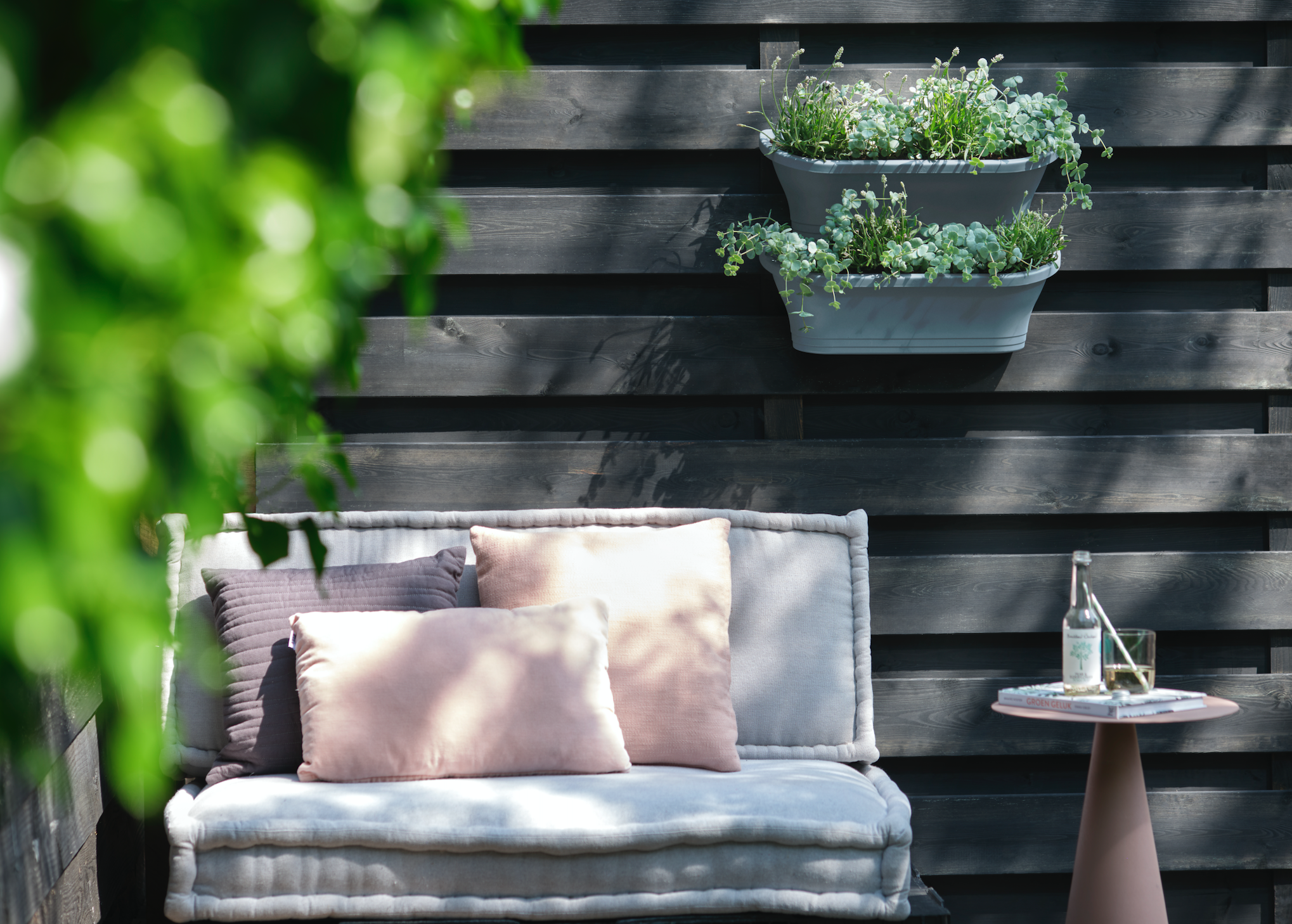
Make use of any walls, fences, or even ceilingswhen it comes to modern garden ideas by adding a hanging basket to your compact outdoor set-up. Not only can hanging baskets save on space, but they also add style and sophistication to any empty spot.
Adams says, ‘Growing tomatoes in containers or even hanging baskets can make use of underused spaces, with varieties like ‘tumbling tom’ cascading over the edges, great for easy picking.
'Strawberries in hanging baskets are really easy and fun ways to grow, and having them in hanging baskets will often keep them out of harm’s way from common garden pests. Try growing a variety called ‘Toscana’ for its attractive deep pink flowers as well as its tasty fruits.’
The Livingetc newsletters are your inside source for what’s shaping interiors now - and what’s next. Discover trend forecasts, smart style ideas, and curated shopping inspiration that brings design to life. Subscribe today and stay ahead of the curve.
2. Invest in balcony planters and pots
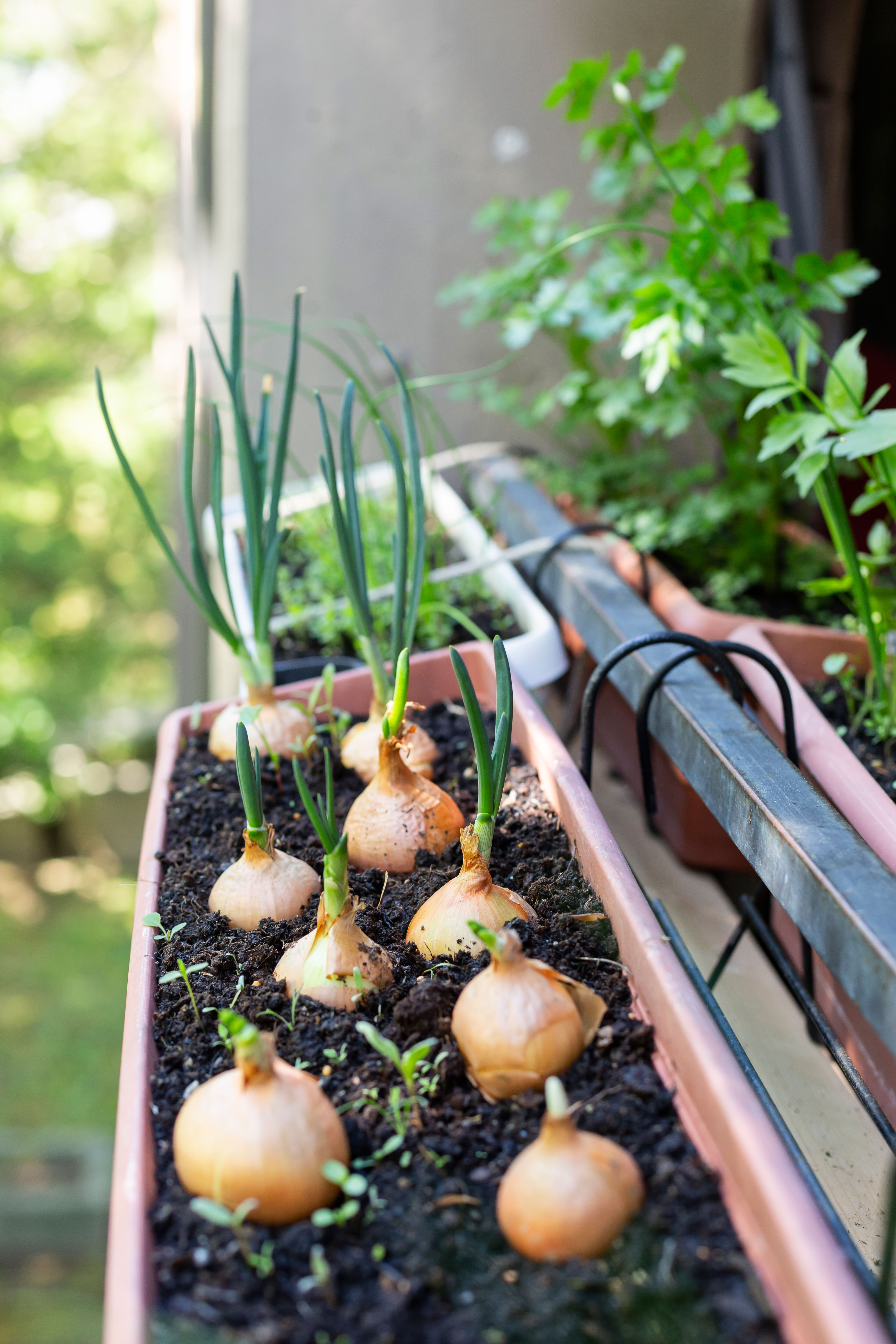
Put your balcony ideas to good use and make it work even harder by hanging planters over your small terrace or fence. Coming with an integrated water reservoir, so your veggies don't get thirsty.
Adams says, ‘There are many dwarf varieties of vegetables that can be grown in tight spaces. Lettuce Little Gem and Dwarf Runner Bean ‘Hestia’ don’t take up much space, and there are lots of varieties of tomato that have been created for growing in pots such as Tomato ‘Balconi Yellow’.'
3. Think vertically
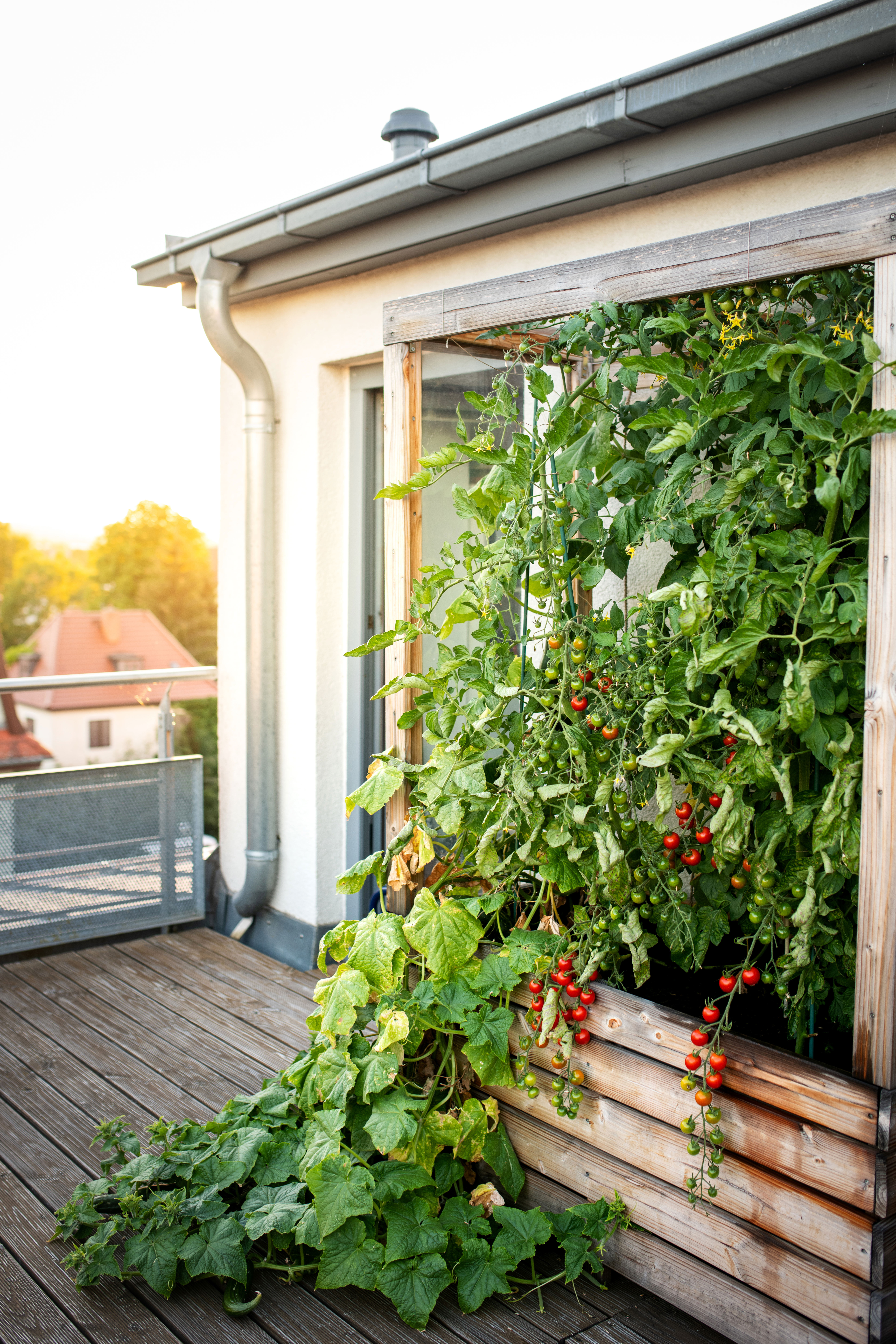
Grow vertically, instead of horizontally to make the most of your small space
We can't all be blessed with sprawling gardens with acres and acres of land. Especially if you're living it up in the city. However, that's not to say you can't get creative with your space. Instead of thinking horizontally, grow upwards and create a living wall to help maximize your outdoor area.
Adams tells us, ‘Courgette Black Forest is known for its climbing ability and is willing to scramble up a fence or trellis. You could even get creative and try growing certain veg over an arch.’
4. Grow veg in a window box
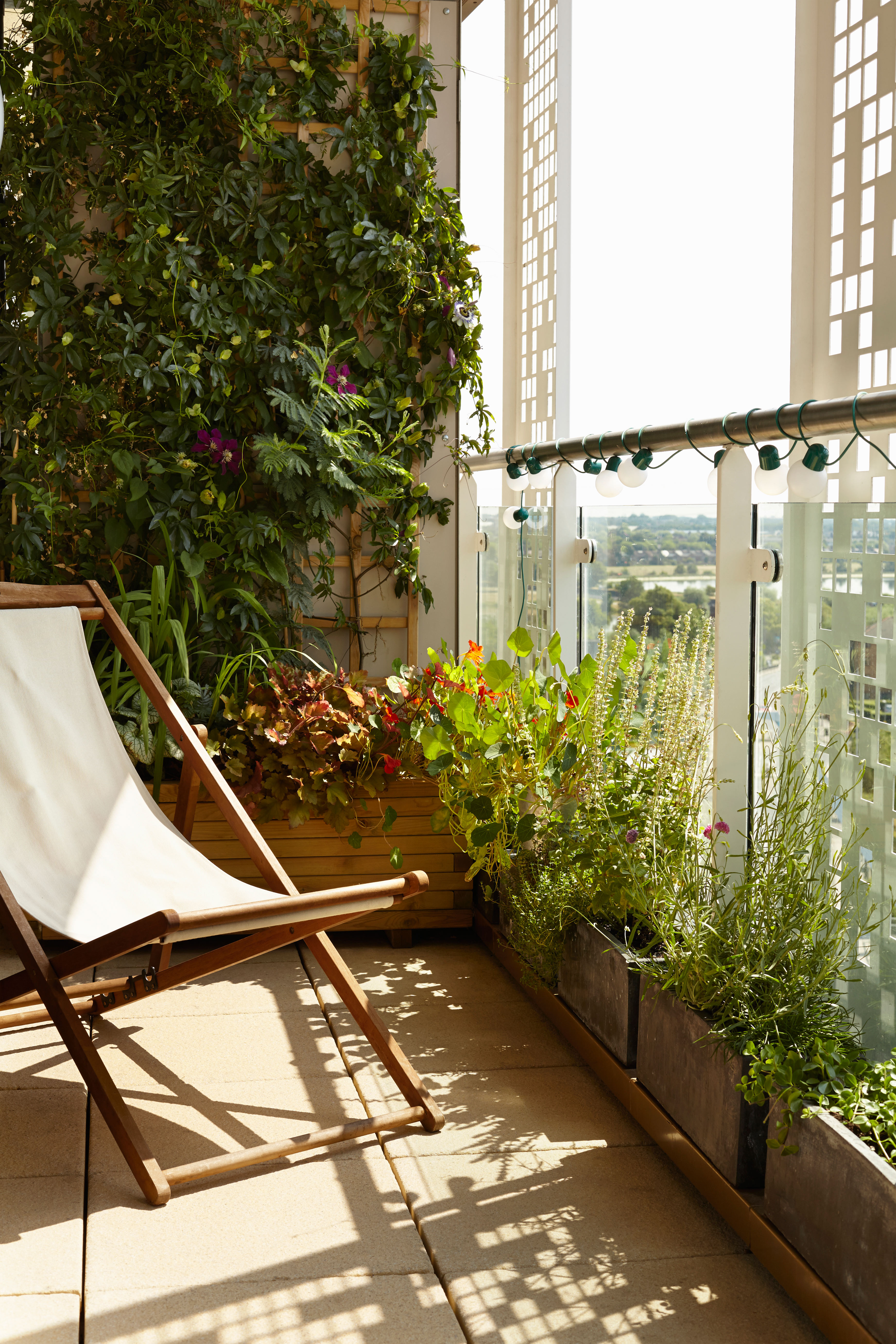
If you have deep window sills, add a window box to your outdoor space. Not only do they add some added interest to your home, they’re also a great way to maximize your planting space if your back garden is on the small side.
For a stylish look, choose matching window boxes and let the veg speak for itself. Or, you could try adding pops of color to coordinate with the goods you decide to grow.
Adams tells us, ‘By growing them on your kitchen window sill or in a window box you can reach out of the window and grab a handful whilst cooking up a culinary storm in the kitchen.’
5. Use raised beds to grow veg and add interest

Got a spare corner you can bagsy for your veg? Then why not save it for raised beds, which look good and do good by helping you grow your own produce. If you've always wanted to sow your own salads, you're in luck.
Adams explains, ‘Finally, cut-and-come-again salad leaves are fast easy, and fun to grow in a pot or a smal bed. The best bit is that once you’ve cut them once, they’ll regrow for a second harvest.’
And note the texture they can add to a garden too. Switching a traditional design for a weaved willow raised bed becomes more of a feature of the space.
6. Load up on pots when space is really tight
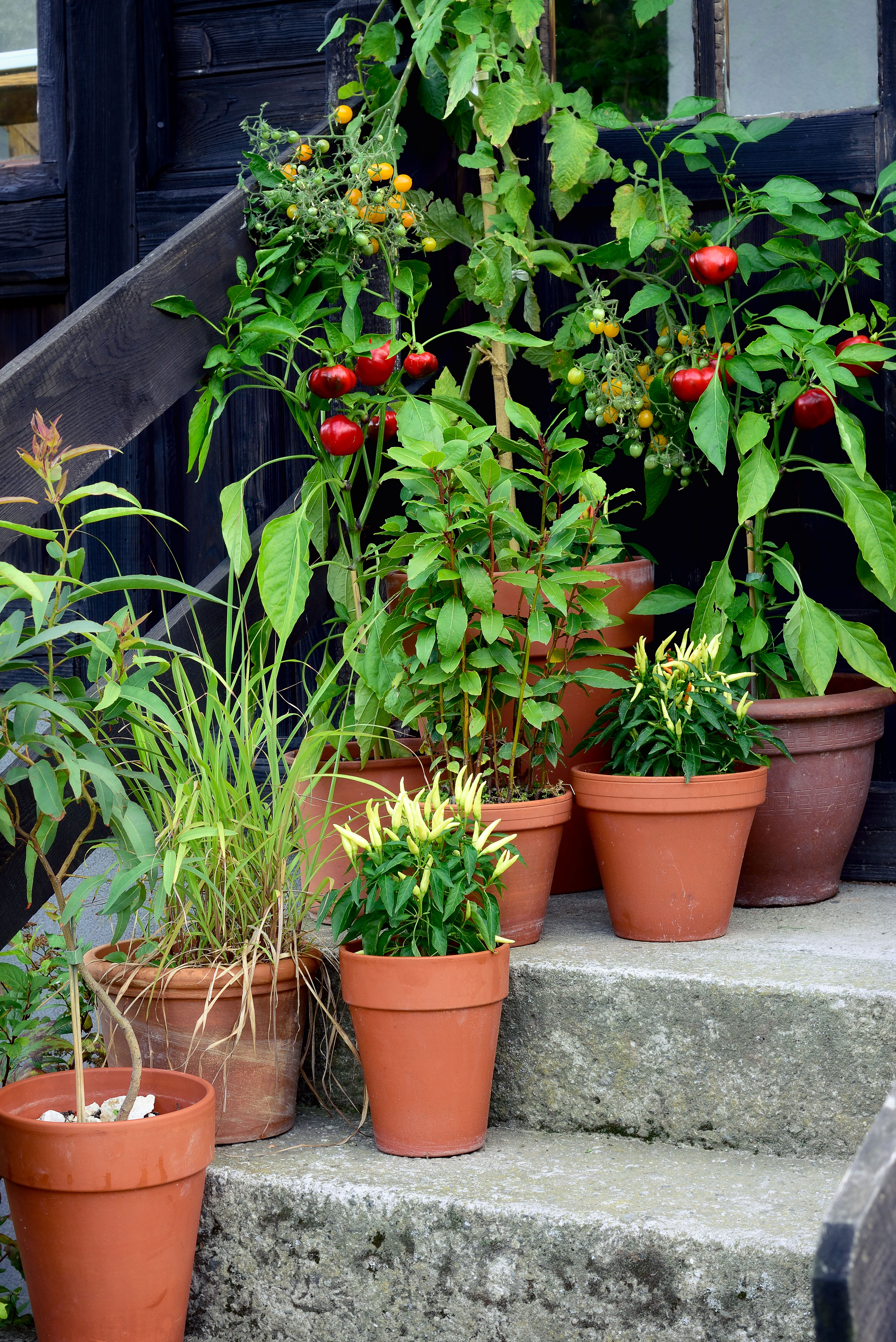
When it comes to small spaces, all you really need is a willingness to grow, some water, sunlight, and pots to pop your seeds into. Hence why container gardening can be the way to go when space is tight.
As Isabelle Palmer, founder of The Balcony Gardener, tells us, ‘A window, patio or balcony is all you need to grow crops. As long as you have good soil, plenty of sun, and water.
'I always tend to grow things I cannot buy locally in the shops or I readily use such as herbs. Container gardens are also great for small spaces as you can grow almost all fruit, vegetables, or herb as long as it's large enough to accommodate their mature size.’
7. Learn how to companion plant
Everyone has a differing opinion when it comes to the subject of living more sustainably. But one thing's for sure – the topic of sustainability has seen a dramatic and sharp increase in awareness. So why not incorporate sustainable living into your gardening?
Enter: companion planting – which maximizes growth and crops by planting mutually beneficial plants alongside one another.
Palmer tells us, ‘Companion planting reduces pests, but it also conserves space. Shade-tolerant plants benefit next to taller crops. Early harvested vegetables, such as spinach, radishes, and beans can be planted with slower-growing crops such as broccoli, courgette, and peppers.’
How do I start a small vegetable garden?
Andrea Bellamy, author of Small-Space Vegetable Gardens: Growing Great Edibles in Containers, Raised Beds, and Small Plots says, there are many benefits that come with growing your own vegetables in your compact space.
She says, 'You'll have access to fresh produce and spark the joy that comes with working outside and nurturing living things. And, unlike with a large garden, small gardens are typically easier and less time-consuming to maintain.'
But how do you start a small vegetable garden?
Bellamy explains, 'First, assess your space: how much sunlight do you get, daily? This will determine what you can grow. Most fruiting crops need upward of six hours of sunlight daily, while leafy greens, legumes, and root vegetables can make do with four. Then, start small, perhaps with a pot or two of perennial herbs like rosemary, thyme, and oregano. They’re easy care, tough, drought resistant, and attract beneficial insects like bees.
'You need fewer tools in a small garden. No need to invest in long-handled shovels and rakes: a multi-purpose weeder, a trowel, and an efficient way to water (watering can or a hose with a good nozzle) are all you need.'
What vegetables work best in small vegetable gardens and why?
Thankfully – there's not much that you can't grow in your small vegetable garden.
Bellamy says, 'Other than herbs, shallow-rooted vegetables like lettuces and other leafy greens are great in containers. Peppers, tomatoes, and eggplants are also good choices for small space growing as they make for compact-but-productive plants.
'Seed companies are investing in developing small-space varieties due to the rise in urban gardening. Look for varieties bred to stay small, or to thrive in containers.'
While according to Pete Adams, from the RHS Garden Rosemoor says there are lots of dwarf varieties of vegetables that can make it easier to squeeze lots of variety into a small vegetable garden.
Adams says, ‘Dwarf French beans come in a range of different colors, from yellows and greens to purples, which not only look attractive but taste great too. Beetroot can become a dual-purpose crop, as not only will you get the root but you can also pick an odd young leaf to throw in a salad for some extra color. Growing tomatoes in containers or even hanging baskets can make use of underused spaces, with varieties like ‘tumbling tom’ cascading over the edges, great for easy picking.’
How can you best look after a small vegetable garden?
So you've done all the hard work of creating a small vegetable garden. Now comes the nurturing of it.
Adams says, ‘Always consider the amount of time you have available – it’s better to grow a few things well rather than a lot of things that then become too much of a challenge.
'Look at what will work best for you, and the time you have available to achieve it. Why not try introducing your new small vegetable garden into part of your daily and weekly routine, sparing 10 minutes here and there to do the odd jobs and keep on top of things.’
While Isabelle Palmer says, ‘Watering is key to healthy plump crops! If you’re growing in containers they will be dependent on you for this so water daily (or twice daily) when the weather is hot so plants do not dry out. Feed twice weekly in the growing season and look out for pests and diseases.
'Support your climbing vegetables with stakes, cages, and supports. This will reduce stress to the crop and allow it to grow upright for a bountiful crop.’
Becks is a freelance lifestyle writer who works across a number of Future's titles. This includes Real Homes, Top Ten Reviews, Tom's Guide, TechRadar and more. She started her career in print journalism at a local newspaper more than 8 years ago and has since then worked across digital and social media for food, fashion and fitness titles, along with home interior magazines. Her own interior style? She's big on creating mindful spaces in every corner of her home. If it doesn't spark joy or happiness, it has no place here. When she’s not writing, she’s reading and when she’s not reading, she’s writing.